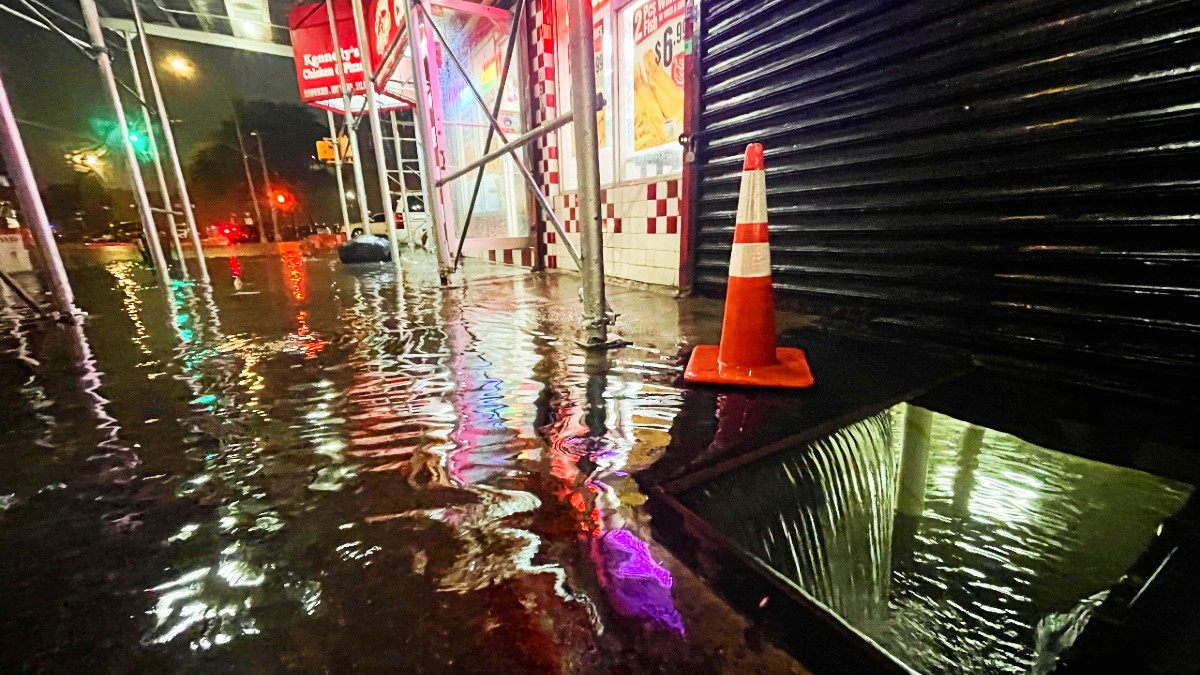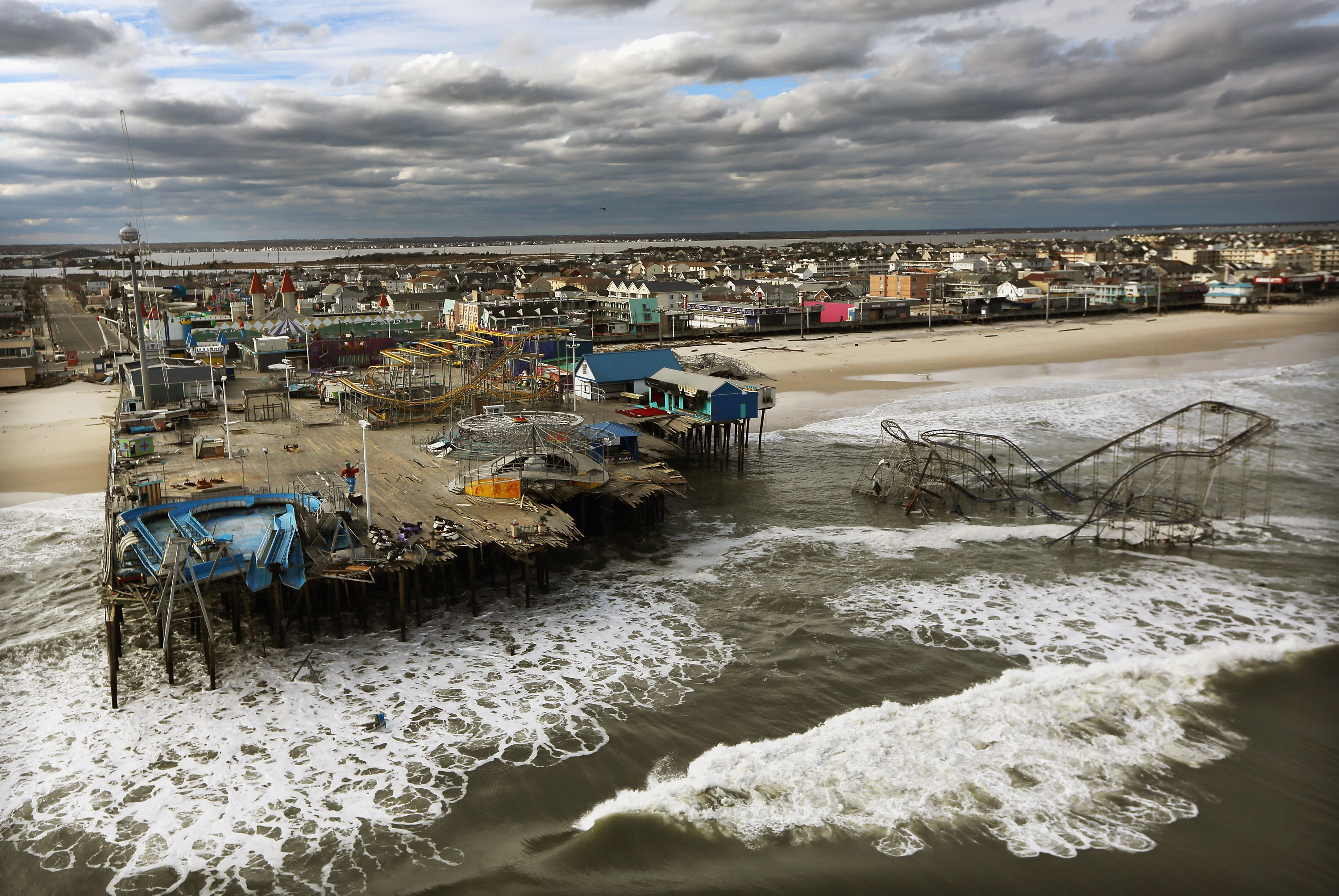Hurricane Katrina and Superstorm Sandy rank as two of the most devastating storms to hit the United States, but the calamities prompted markedly different approaches to future flood protection.
In the case of Katrina, the construction of a massive regional surge barrier took place with unprecedented urgency in Louisiana. In the case of Sandy, New York and New Jersey are still debating the best approach to battle storm surge – a full decade later.
“We have a global city here. Why shouldn’t we be all protected?” said Suzanne DiGeronimo, an architect and urban planner with the Storm Surge Working Group, a collective founded at Stony Brook University that advocates for regional surge barriers.
Get Tri-state area news and weather forecasts to your inbox. Sign up for NBC New York newsletters.
Last month, the U.S. Army Corps of Engineers announced the tentative selection of a regional plan for managing coastal storm risks in and around New York Harbor. The $52 billion blueprint includes a network of smaller surge barriers at key waterways like the Gowanus Canal, the Arthur Kill and Jamaica Bay.
But the federal government estimates construction of those barriers wouldn’t commence until 2030, and wouldn’t be complete until 2044. The Army Corps also considered a more ambitious harbor-wide sea gate that would extend from Sandy Hook in New Jersey to Breezy Point in Queens, but the agency rejected that idea, estimating it would take even longer – till 2062.
The Storm Surge Working Group questions those timelines, mainly because the Army Corps has demonstrated it can design and build massive surge barriers in a in a matter of years – not decades.
In 2013, just eight years after Katrina caused catastrophic flooding in Louisiana, the Army Corps completed construction of the nearly 2-mile Lake Borgne Surge Barrier, a $1.3 billion dollar project nicknamed “The Great Wall of Louisiana.” In the summer of 2012, even before construction was finished, the barrier was used for the first time to protect New Orleans from Hurricane Isaac.
“We’re preparing for a single superstorm that already happened but we have to prepare for a future of flooding that includes sea level rise, includes storm surge and urban flooding,” said Storm Surge Working Group Communications Director Melanie Shaw.
This month, the Storm Surge Working Group took that message directly to New Yorkers, collaborating with Classic Harbor Line, a cruise company that offers boat tours highlighting the need for sustainable design and greater resiliency along New York City’s vulnerable shoreline.
When asked why the Army Corps forecasts decades to build out storm surge protection in New York Harbor even after completing Louisiana’s Lake Borgne barrier in a matter of years, the agency offered no specifics.
“The scale, size and construction challenges between these projects is proportional,” said James D’Ambrosio, an Army Corps spokesperson. “Any two projects are different, especially when you factor in geographical and urban/rural differences.”
There are, no doubt, unique complexities associated with building sea barriers in a busy harbor between two of the nation’s most populous states. And ten years after Sandy, stakeholders in New York and New Jersey continue to express disagreement about which flood protection approach is best.
For example, the Storm Surge Working Group is pushing for that more ambitious harbor-wide sea gate, arguing a patchwork of smaller barriers would leave vast stretches of coastline unprotected. But some environmentalists oppose the a larger barrier – worrying a massive in-water structure between the Atlantic Ocean and New York Harbor could impede fish migration and threaten the Hudson River ecology.
D’Ambrosio stressed the plan tentatively selected by the Army Corps is not set in stone but the agency favors building that patchwork of smaller sea barriers because building the larger harbor-wide barrier would take so much longer.
“[T]he single large barrier to the Atlantic Ocean, would not provide substantial benefits until it was fully completed, whereas many of the features [in the network of smaller barriers] would provide partial benefits much earlier in its far shorter construction duration,” D’Ambrosio said.
The Army Corps has scheduled virtual public presentations with Q&A sessions on Oct. 27th and Nov. 5th to help inform people about how surge barriers would work in New York Harbor. A series of in-person public meetings is expected to be announced in early November.



